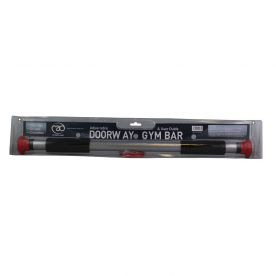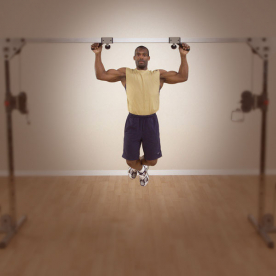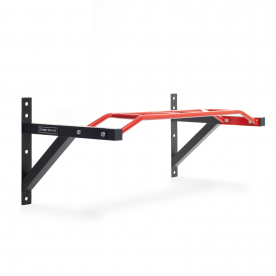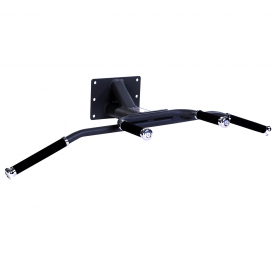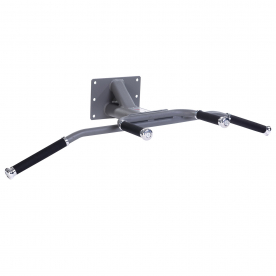Pull Up Bars
Adding pull-ups into your workouts increases your grip strength and for bodybuilders good grip strength is a must. However, if grip is a weakness for you, you could try and add in some lifting straps to your pull-up routine. These straps will allow you to get in some extra reps before your hand starts to slip. Pull-ups are as much as a mental challenge as a physical one.
Benefits Of Pull-Up Bars
Strength
Adding pullups in to your workout routine aids the improvements of strength in your back and core muscles, this all has a positive effect on your posture, helping you to appear taller and leaner.
What Are The Advantages of Pull-Ups?
They are compound movements
Compound movements are effective in increasing strength, gaining muscle mass and burning calories.
They are versatile
By changing your grip, leg position or hand placement during pull-ups, you can refocus which muscles you are targeting.
They help your grip strength
Pull-ups help train your grip through only using hands and fingers to haul your body weight up.
They can help you achieve a V-shaped physique
By primarily working the lats through pull-ups, the width of your back will gradually increase, giving you that desired V-shaped torso.
They can help relieve back pain
A stronger back makes it easier for you to stabilise yourself. This reduces the likelihood of slouching into a poor posture, reeducing the chances of future back pain.
Pull-Up Tips For Beginners
1. Try isometric holds
Practice holding yourself at the top of the pull-up position for as long as you can. By doing this, you are strengthening the muscles required for a pull-up.
2. Give negative pull-ups a go
Jump to the top of the pull-up position then practice slowly lowering yourself down. By gradually increasing the time it takes to lower yourself to the bottom of the movement, you'll build the strength you need to complete a full pull-up.
3. Try assisted pull-ups (with a resistance band)
Loop a resistance band over the pull-up bar and secure your knees or feet within the band. The band helps to reduce the resistance felt by supporting your body weight, making the pull-up easier to perform.




